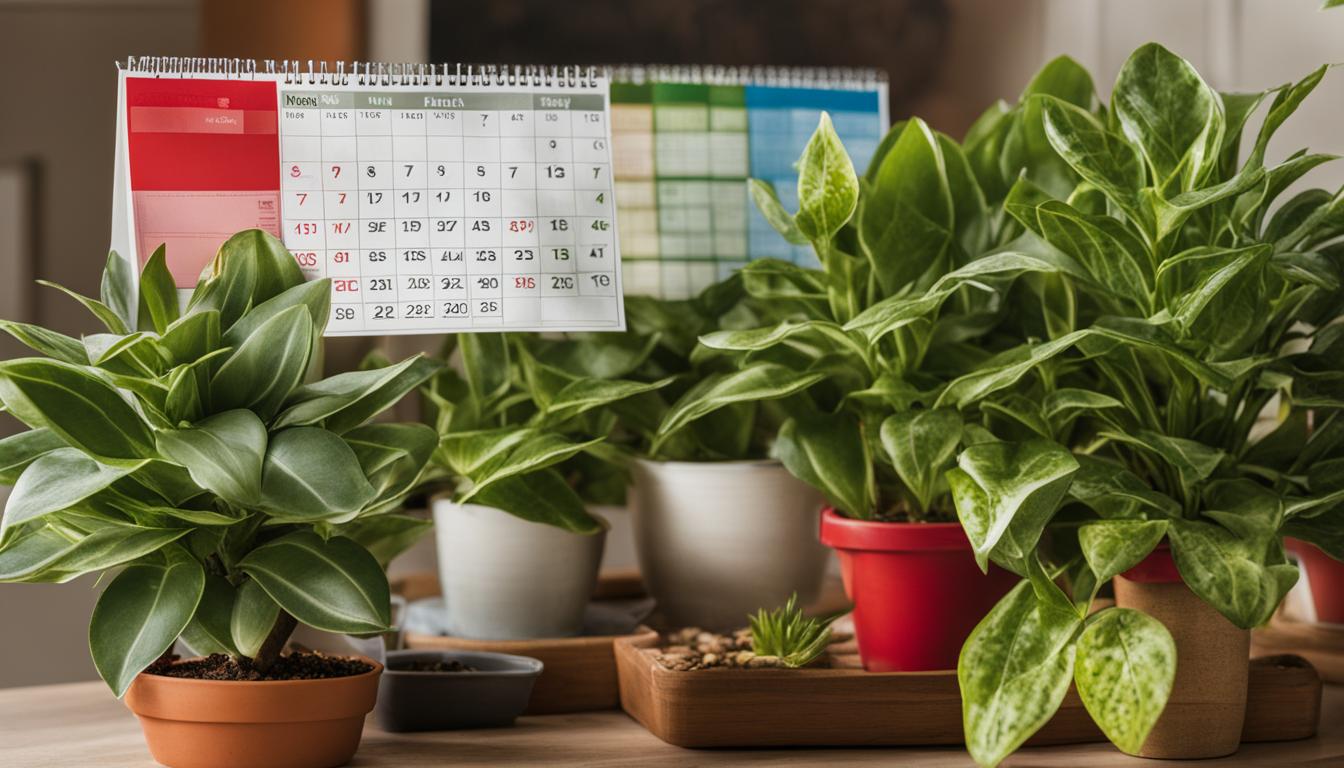
Applying the right fertilizer to your houseplants is essential for their overall health and vitality. While they may not show obvious signs of nutrient deficiencies, regular fertilization is necessary to ensure they receive the necessary nutrients for optimal growth.
To help you navigate the world of houseplant fertilization, I’ll provide you with some seasonal fertilizing tips that will keep your plants thriving.
Key Takeaways:
- Knowing when and how to fertilize houseplants is crucial for their health and growth.
- Fertilize your houseplants during periods of active growth, which usually align with the seasons.
- Create a general fertilizer schedule based on the specific needs of your houseplants.
- Understand the N-P-K ratio of your chosen fertilizer and choose one formulated for houseplants.
- Consider the different types of houseplant fertilizers available, such as liquid and granular options.
When to Feed Houseplants
Houseplants, like all living things, need nourishment to thrive. While they don’t provide clear signals when they require fertilization, there are guidelines you can follow to determine the best time to feed your houseplants. Understanding their growing cycle and the influence of seasons will help you establish an effective fertilizing schedule.
In general, houseplants should be fed during periods of active growth. This typically occurs in the spring and summer months when plants are actively producing new leaves and stems.
To determine the specific timing for your houseplants, start fertilizing in the spring, around 8 weeks before the last expected spring frost. This will allow them to benefit from the nutrient boost as they enter their peak growth phase.
During the active growth period, adjust the frequency and strength of fertilizer applications according to your plant’s specific nutritional needs. Some plants may require more frequent feeding, while others may need a lighter touch.
Monitoring the health and growth of your houseplants will help you find the right balance and ensure they receive the necessary nutrients to thrive.
When to Feed Houseplants:
To summarize, here are some key tips to help you determine when to feed your houseplants:
- Start fertilizing in the spring, around 8 weeks before the last expected spring frost.
- Feed during periods of active growth, typically in the spring and summer months.
- Adjust the frequency and strength of fertilization based on your plant’s specific nutritional needs.
- Monitor the health and growth of your houseplants to ensure they receive the necessary nutrients.
| Houseplant Type | Preferred Fertilizing Time |
|---|---|
| Succulents and cacti | Spring and summer |
| Foliage plants | Spring and summer |
| Flowering plants | Spring and summer |
| Herbs | Spring and summer |
| Orchids | Spring and fall |
Remember that these guidelines are general and may vary depending on the individual needs of your houseplants. By observing their growth patterns and adjusting your fertilizing schedule accordingly, you can provide them with the optimal care they require.
Best Fertilizer Schedule for Houseplants
To simplify the fertilizing process for most common houseplants, a general fertilizer schedule can be followed. This schedule is based on the cycle of the growing season and offers a good balance for both heavy and light feeders. Here’s a breakdown of the best fertilizer schedule for houseplants:
Spring
Start fertilizing houseplants in spring, with the first few applications at half the recommended strength or amount. This gentle approach helps plants transition from their dormant winter phase to active growth. As the days get longer and temperatures rise, houseplants need a nutrient boost to support new leaf and stem development.
Summer
During summer, switch to a more regular fertilizer program, adjusting the frequency based on the type of fertilizer used. This is when plants are in full swing and need extra nutrients to support their vigorous growth. Be sure to choose a balanced fertilizer with equal amounts of nitrogen (N), phosphorous (P), and potassium (K) to promote overall plant health.
Fall
Taper off fertilizer amounts and frequency in fall, as the days start to shorten and plants begin to prepare for winter dormancy. Reduce the strength of the fertilizer and gradually decrease the number of applications. This helps plants slow down their growth and conserve energy for the colder months ahead.
Winter
Avoid fertilizing houseplants during winter. Most houseplants enter a period of dormancy during this time, and their nutrient needs are minimal. Fertilizing during winter can lead to overfeeding and cause harm to the plants. Instead, focus on maintaining appropriate watering and light conditions to keep your houseplants healthy throughout the season.
Understanding Houseplant Fertilizer
Houseplant fertilizers contain essential nutrients that support the growth and health of indoor plants. These fertilizers typically come in the form of granules or liquid solutions and are applied to the soil to provide the necessary nutrients.
When choosing a houseplant fertilizer, it’s important to understand the N-P-K ratio, which indicates the percentage of nitrogen (N), phosphorous (P), and potassium (K) in the fertilizer. Different plants have varying nutritional needs, so selecting a fertilizer with the right ratio is crucial.
The N-P-K ratio provides valuable information about the nutrient composition of the fertilizer. For example, a fertilizer with a ratio of 10-10-10 contains equal amounts of nitrogen, phosphorous, and potassium.
On the other hand, a fertilizer with a ratio of 5-10-5 has a higher concentration of phosphorous, which promotes flowering and root development. By understanding the N-P-K ratio, you can choose a fertilizer that aligns with the specific needs of your houseplants.
Benefits of Understanding the N-P-K Ratio
- Optimal Growth: By providing the right balance of nutrients, a fertilizer with the appropriate N-P-K ratio can support healthy plant growth and development.
- Improved Flowering: Fertilizers with higher phosphorous content, indicated by a higher P value in the N-P-K ratio, can stimulate flower production and enhance blooms.
- Strong Root Development: Fertilizers with higher potassium content, represented by a higher K value, can promote robust root growth and strengthen the overall structure of the plant.
- Better Nutrient Absorption: Understanding the N-P-K ratio allows you to choose a fertilizer that provides the specific nutrients your plants need, maximizing nutrient absorption and utilization.
By considering the N-P-K ratio and the specific nutritional needs of your houseplants, you can choose a fertilizer that supports their growth and overall well-being. Remember to follow the instructions provided by the manufacturer for proper application and dosage to avoid over-fertilization, which can be harmful to your plants.
| Nutrient | Role | Benefits |
|---|---|---|
| Nitrogen (N) | Stimulates leaf and stem growth | Promotes lush, green foliage |
| Phosphorous (P) | Supports flowering, fruiting, and root development | Enhances flower production and strengthens roots |
| Potassium (K) | Aids in overall plant health and disease resistance | Promotes strong root growth and improves plant vigor |
Types of Houseplant Fertilizer
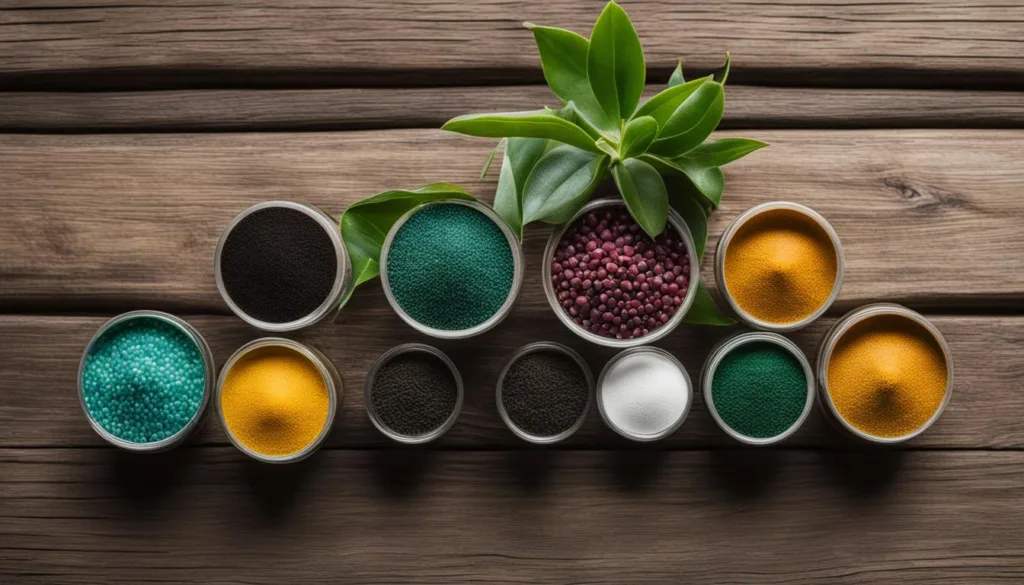
When it comes to fertilizing your houseplants, there are different types of fertilizers to choose from. Two common options are liquid fertilizers and granular fertilizers. Each type has its own advantages and considerations to keep in mind.
Liquid Houseplant Fertilizer
Liquid fertilizers are a popular choice among plant enthusiasts because of their ease of use and quick absorption by plants. They come in concentrated form and need to be diluted before application. Liquid fertilizers are typically applied during periods of active growth, such as spring and summer.
One advantage of liquid fertilizers is that they provide a wide range of essential nutrients, including macronutrients and micronutrients.
They can be easily absorbed by the roots and provide immediate nourishment to the plants. Liquid fertilizers also allow for more precise control over the nutrient levels, as you can adjust the dilution ratio based on the specific needs of your plants.
Granular Houseplant Fertilizer
Granular fertilizers, on the other hand, are slow-release fertilizers that provide a steady supply of nutrients to plants over time. They come in the form of loose pellets or compressed spikes that can be inserted into the soil. Granular fertilizers are generally applied less frequently compared to liquid fertilizers.
One advantage of granular fertilizers is that they require less frequent applications, as their nutrients are released slowly. This can be beneficial for busy plant owners who may not have the time to fertilize their plants regularly. Granular fertilizers also reduce the risk of over-fertilizing, as they release nutrients gradually and are less likely to cause nutrient burn.
| Types of Houseplant Fertilizer | Advantages | Considerations |
|---|---|---|
| Liquid Fertilizer | Quick absorption, wide range of nutrients, precise control | Requires more frequent applications, potential risk of over-fertilization if not diluted properly |
| Granular Fertilizer | Slow-release, less frequent applications, reduced risk of over-fertilizing | Slower nutrient release, may require regular monitoring of nutrient levels |
When choosing between liquid and granular fertilizers, consider factors such as your schedule, preference for application methods, and the specific needs of your plants. Both types can provide the necessary nutrients for your houseplants, so it ultimately comes down to what works best for you and your green companions.
How to Fertilize Houseplants
Properly applying fertilizer to your houseplants is essential for their overall health and vitality. By following the right techniques and practices, you can ensure that your plants receive the necessary nutrients to thrive. Here are some important tips on how to apply houseplant fertilizer effectively:
1. Dilute liquid fertilizers:
If you’re using liquid fertilizers, it’s crucial to dilute them to the recommended strength. This helps prevent over-fertilization, which can harm your plants. Follow the instructions provided by the manufacturer and mix the fertilizer with water according to the recommended ratio. Apply the diluted fertilizer during your regular watering sessions to evenly distribute the nutrients to the plants’ roots.
2. Avoid direct contact with leaves:
When applying fertilizer, make sure to avoid direct contact with the leaves of your houseplants. Fertilizer can cause damage or burn the leaves if applied directly. Instead, focus on applying the fertilizer to the soil surface or mixing it into the potting mix. This ensures that the nutrients are absorbed by the plant’s roots and can be utilized effectively.
3. Water before fertilizing:
Before applying fertilizer, it’s crucial to water your houseplants thoroughly. This helps prevent root burn and ensures that the fertilizer is absorbed more efficiently. Watering your plants before fertilizing also helps distribute the nutrients evenly throughout the soil, promoting better nutrient uptake by the roots.
Remember, each houseplant has its own specific nutritional needs, so it’s essential to choose a fertilizer with the right N-P-K ratio for your plants.
Follow the recommended application instructions provided by the manufacturer and adjust the frequency and strength of fertilization based on your plant’s growth and health. By following these houseplant maintenance tips, you can provide optimal nutrition to your plants and help them thrive.
Understanding Fertilizer Timing
When it comes to fertilizing houseplants, timing is everything. Knowing when to apply fertilizer can greatly impact the health and growth of your indoor plants. The timing of fertilizer application should align with the plant’s growth cycles and the seasons. By understanding the best times to fertilize, you can provide your houseplants with the nutrients they need to thrive.
Generally, the ideal time to start fertilizing houseplants is in the spring, when they enter a period of active growth. This is typically around 8 weeks before the last expected spring frost.
As the plant continues to grow throughout the summer, you can adjust the frequency and strength of fertilizer applications based on the specific needs of the plant and the type of fertilizer you’re using.
However, as the growth of houseplants slows down in the fall, it’s important to taper off the amount and frequency of fertilizer. This prepares the plants for the dormant period during winter when they are not actively growing.
In most cases, it’s best to avoid fertilizing houseplants during winter, unless you live in a climate without regular winter frosts or in a tropical climate where continuous fertilization may be necessary.
Seasonal Fertilizing Schedule
| Season | Timing | Fertilizer Application |
|---|---|---|
| Spring | 8 weeks before the last expected spring frost | Start fertilizing with half the recommended strength or amount |
| Summer | During periods of active growth | Adjust frequency and strength based on plant’s needs and fertilizer type |
| Fall | Taper off fertilizer amounts and frequency as growth slows down | Prepare plants for winter dormancy |
| Winter | Avoid fertilizing unless in frost-free or tropical climates | Plants are not in a period of active growth |
By following a seasonal fertilizing schedule, you can ensure that your houseplants receive the right amount of nutrients at the right time, promoting healthy growth and overall plant vitality.
Tips for Successful Houseplant Fertilizing
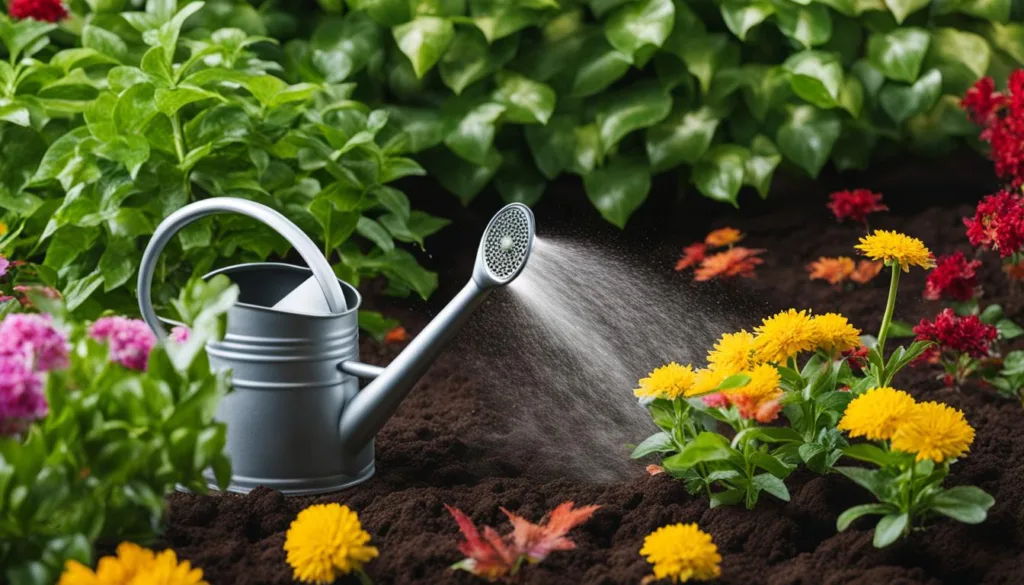
When it comes to fertilizing your houseplants, following a few key tips can ensure successful growth and vibrant foliage. Consider these houseplant fertilizing tips to keep your indoor plants thriving:
- Choose the right fertilizer: Select a fertilizer with the appropriate N-P-K ratio for your specific houseplants. Different plants have different nutrient requirements, so it’s important to provide them with the right balance of nitrogen, phosphorus, and potassium.
- Dilute liquid fertilizers: When using liquid fertilizers, dilute them slightly more than the recommended strength to avoid over-fertilization. This will prevent the risk of burning the roots and damaging the plants. Follow the instructions provided by the manufacturer for proper dilution.
- Water before fertilizing: Always water your houseplants before applying fertilizer. This will ensure that the roots are well-hydrated and ready to absorb the nutrients. Watering before fertilizing also helps prevent root burn and aids in the absorption of the fertilizer.
- Monitor plant growth: Keep an eye on the growth of your houseplants and adjust the frequency and strength of fertilizer applications if needed. If you notice slow growth or pale foliage, it may be a sign that your plants require more frequent or stronger fertilization. On the other hand, if you see signs of over-fertilization, such as burned leaf tips or stunted growth, reduce the frequency or strength of fertilization.
Tips for Successful Houseplant Fertilizing
When it comes to fertilizing your houseplants, following a few key tips can ensure successful growth and vibrant foliage. Consider these houseplant fertilizing tips to keep your indoor plants thriving:
- Choose the right fertilizer: Select a fertilizer with the appropriate N-P-K ratio for your specific houseplants. Different plants have different nutrient requirements, so it’s important to provide them with the right balance of nitrogen, phosphorus, and potassium.
- Dilute liquid fertilizers: When using liquid fertilizers, dilute them slightly more than the recommended strength to avoid over-fertilization. This will prevent the risk of burning the roots and damaging the plants. Follow the instructions provided by the manufacturer for proper dilution.
- Water before fertilizing: Always water your houseplants before applying fertilizer. This will ensure that the roots are well-hydrated and ready to absorb the nutrients. Watering before fertilizing also helps prevent root burn and aids in the absorption of the fertilizer.
- Monitor plant growth: Keep an eye on the growth of your houseplants and adjust the frequency and strength of fertilizer applications if needed. If you notice slow growth or pale foliage, it may be a sign that your plants require more frequent or stronger fertilization. On the other hand, if you see signs of over-fertilization, such as burned leaf tips or stunted growth, reduce the frequency or strength of fertilization.
Choosing Between Organic and Chemical Fertilizers
When it comes to fertilizing your houseplants, you have two main options: organic and chemical fertilizers. Each type has its own pros and cons, so it’s important to understand the differences before making a decision.
Organic fertilizers are derived from natural sources, such as compost, animal manure, and plant extracts. They provide nutrients to plants in a slower, more gradual manner, allowing for steady growth and long-term soil improvement.
One of the key advantages of organic fertilizers is their environmental friendliness. They are biodegradable and promote soil health by adding organic matter and beneficial microorganisms. Additionally, organic fertilizers are generally safer for pets and wildlife.
Chemical fertilizers, on the other hand, are synthetic products that provide an immediate boost of nutrients to plants. They are usually more concentrated than organic fertilizers, which means you need to use less product for the same effect.
Chemical fertilizers can be tailored to specific nutrient needs, as they often come with a balanced N-P-K ratio. However, their fast-release nature can increase the risk of over-fertilization if not used correctly. Chemical fertilizers can also have a negative impact on the environment, as excess nutrients can leach into water bodies and contribute to water pollution.
So, which one should you choose? The decision ultimately depends on your personal preferences and circumstances. If you prioritize environmental sustainability and want to avoid potential harm to pets or wildlife, organic fertilizers may be the better choice.
If you’re looking for quick results and precise nutrient control, chemical fertilizers might be more suitable. It’s also worth considering the specific needs of your houseplants and consulting with a gardening expert to determine the best fertilizer option for your individual plants.
Pros and Cons of Organic and Chemical Fertilizers
| Organic Fertilizers | Chemical Fertilizers |
|---|---|
| Slow-release nutrients | Immediate nutrient boost |
| Environmentally friendly | Potential for water pollution |
| Improves soil health | Precise nutrient control |
| Safe for pets and wildlife | Risk of over-fertilization |
Both organic and chemical fertilizers have their advantages and disadvantages, and neither is inherently superior to the other. Consider your gardening goals, environmental concerns, and specific plant needs when deciding which type of fertilizer to use. Remember to follow the application instructions carefully and monitor your plants’ response to ensure their optimal health and growth.
Fertilizing houseplants on a seasonal basis is essential for their overall health and growth. By following a few simple tips, you can ensure that your houseplants thrive all year round. Start by establishing a fertilizer schedule based on the specific needs of your plants and the growing seasons.
Pay attention to the N-P-K ratio, which indicates the percentage of nitrogen, phosphorous, and potassium in the fertilizer. Choose a fertilizer specifically formulated for houseplants, taking into consideration their nutritional requirements. Liquid or granular fertilizers are both great options, depending on personal preference and the needs of your plants.
When applying the fertilizer, always follow the instructions provided by the manufacturer. Dilute liquid fertilizers to prevent over-fertilization, and avoid applying fertilizer directly to the leaves.
Water your plants before fertilizing to prevent root burn and help the fertilizer absorb better. Additionally, keep an eye on the growth of your plants and adjust the frequency and strength of fertilizer applications if necessary.
By following these seasonal fertilizing tips and taking proper care of your houseplants, you can enjoy healthy and vibrant indoor greenery throughout the year. Remember to choose the right fertilizer, establish a schedule, and provide your plants with the nutrients they need to thrive.
After reading this, check out our other articles on:
FAQ
What are seasonal fertilizing tips for houseplants?
Seasonal fertilizing tips for houseplants include starting to fertilize in spring during periods of active growth, adjusting the frequency and strength of applications based on the type of fertilizer and the plant’s specific needs, tapering off fertilizer amounts and frequency in fall, and avoiding fertilizing houseplants during winter when they are not in a period of active growth except in specific climates.
When should I feed houseplants?
Houseplants should be fed during periods of active growth. Start fertilizing in spring, about 8 weeks before the last expected spring frost, and adjust the frequency and strength of applications based on the plant’s nutritional needs.
What is the best fertilizer schedule for houseplants?
A general fertilizer schedule for houseplants includes starting with half the recommended strength or amount for the first few applications in spring, switching to a more regular fertilizer program during summer, and tapering off fertilizer amounts and frequency in fall. Avoid fertilizing houseplants during winter.
How do I understand houseplant fertilizer?
Houseplant fertilizers contain macro- and micronutrients that are essential for plant growth. The N-P-K ratio listed on the label indicates the percentage of nitrogen, phosphorous, and potassium in the fertilizer. Different plants have different nutritional needs, so it’s important to choose a fertilizer specifically formulated for houseplants. Some fertilizers also include secondary macronutrients and micronutrients.
What types of houseplant fertilizer are available?
There are different types of houseplant fertilizers available, including liquid and granular options. Liquid fertilizers are applied during periods of active growth and can be used more frequently, while granular fertilizers are applied less frequently and release nutrients slowly over time. Consider your personal preference and the specific needs of your houseplants when choosing a fertilizer type.
How do I fertilize houseplants?
When applying houseplant fertilizer, it’s important to follow the instructions provided by the manufacturer. For liquid fertilizers, dilute them to the recommended strength and apply during watering sessions. Use half the recommended strength for the first few applications in spring. Granular fertilizers can be sprinkled on the soil surface or mixed into the potting mix. Avoid applying fertilizer directly to the leaves. Always water the plants before fertilizing to prevent root burn and help the fertilizer absorb better.
When should I fertilize houseplants?
The timing of fertilizer application is crucial for the health of your houseplants. Start fertilizing in spring during periods of active growth. Adjust the frequency and strength of applications based on the type of fertilizer and the plant’s specific needs. Taper off fertilizer amounts and frequency in fall as the growth slows down. During winter, avoid fertilizing houseplants as they are not in a period of active growth, unless you live in climates without regular winter frosts or tropical climates where continuous fertilization may be necessary.
What are some tips for successful houseplant fertilizing?
To ensure successful fertilization of houseplants, dilute liquid fertilizers slightly more than the recommended strength to avoid over-fertilization. Water the plants before applying fertilizer to prevent root burn. Keep an eye on the growth of your plants and adjust the frequency and strength of fertilizer applications if needed. Avoid fertilizing recently repotted plants for 2-3 months to allow them to adjust to their new potting mix. Choose a fertilizer with the right N-P-K ratio for the specific needs of your houseplants.
Should I choose organic or chemical fertilizers for my houseplants?
The choice between organic and chemical fertilizers depends on personal preference and specific circumstances. Chemical fertilizers tend to be more concentrated and cost-effective, while organic fertilizers are made from natural ingredients and may be safer for pets. Both types of fertilizers provide essential nutrients to plants in different ways. Consider factors such as environmental impact, pet safety, and personal beliefs when deciding which type of fertilizer to use for your houseplants.
What are some seasonal fertilizing tips for houseplants?
Seasonal fertilizing tips for houseplants include establishing a fertilizer schedule based on the specific needs of your plants and the growing seasons, paying attention to the N-P-K ratio and choosing a fertilizer formulated for houseplants, considering the type of fertilizer that suits your preferences, following recommended application instructions, and adjusting the frequency and strength of fertilization if needed.

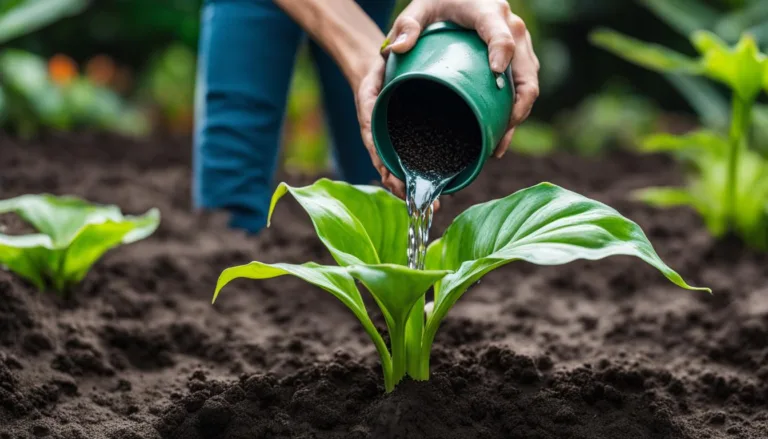
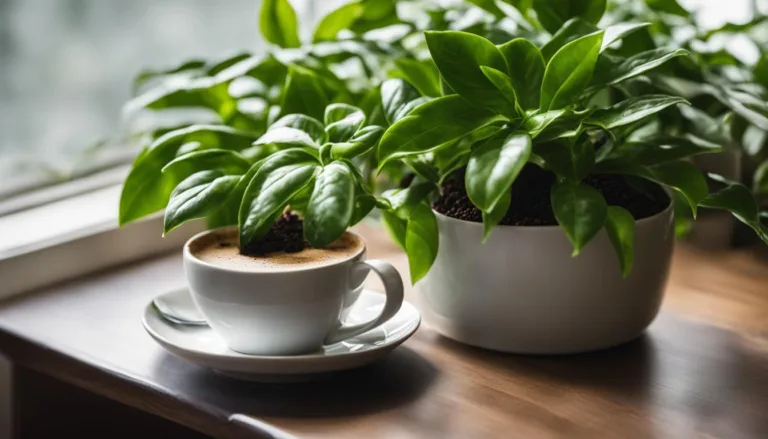
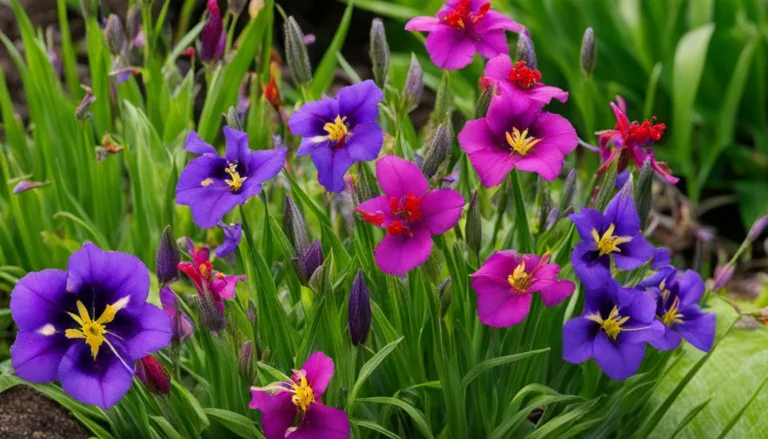

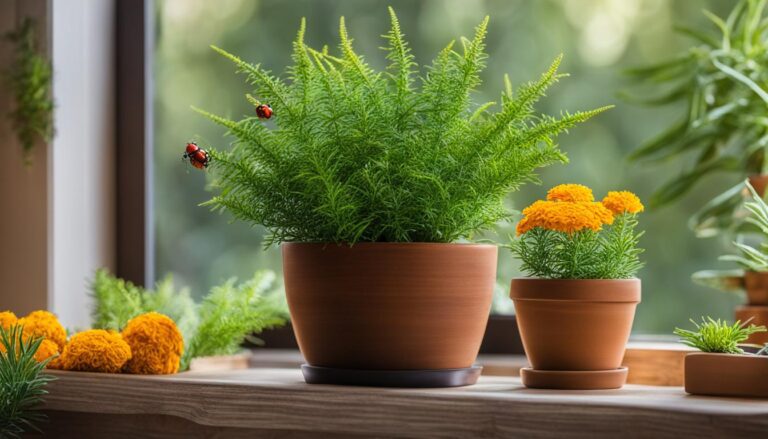
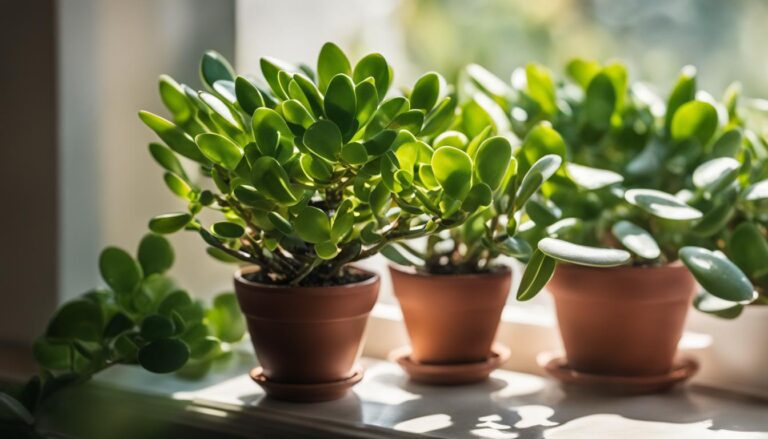
2 Comments
Comments are closed.